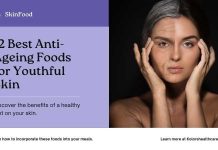Dark spots on the face, also known as hyperpigmentation, are areas of skin that appear darker than the surrounding skin due to an excess of melanin. They can vary in size, shape, and colour and appear anywhere on the face, including the cheeks, forehead, chin, and nose. The appearance of black skin spots may signal a problem with the skin’s health.
Dark spots are a common skin concern, affecting people of all ages and skin types, and may result from sun exposure, hormone fluctuations, or skin injuries. Dark spots on the skin can be a source of concern for many people. Although they are typically benign, they can impact a person’s self-confidence and appearance.
This blog will help you understand what black spots are, their causes, kinds, and treatments.
Types of pigmentation spots on the face
To determine how to eliminate black spots produced by pimples or any other issue, or which cream to apply, etc., you must first understand what form of dark spots have arisen.
Age spots
Flat, brown, or black spots appear on skin areas frequently exposed to the sun, typically in people over 50.
Melasma
It is a type of hyperpigmentation commonly affecting women with darker skin tones, appearing as larger patches of skin ranging from light yellow to dark brown. It is often triggered by hormonal changes during pregnancy or when taking birth control pills and can be challenging to treat.
Post-inflammatory hyperpigmentation (PIH)
Refers to hyperpigmentation due to skin inflammation, such as acne, eczema, or a cut or scratch. It appears as brown, red, or purple marks on the face and can be distressing for those affected. PIH typically fades over time but can be treated with topical medications or laser therapy.
Sun damage
This can affect anyone who spends time in the sun without adequate protection. Excessive exposure to the sun’s harmful UV rays can cause freckles, age spots, and other facial pigmentation issues.
Treatment options for dark spots on the face
Dark spots on the face can be frustrating, but several treatment options are available to help reduce their appearance.
Dark Spots Laser Treatment
Laser therapy for dark spots uses a focused light beam to target the pigmented cells. This causes the cells to break down and get absorbed by the body. This process might cause temporary skin discoloration but is otherwise safe. The entire process can be completed in 3-5 sessions, depending on the type, spot size, and body part. In 1st type of laser treatment, the laser is used on dark or pigment spots. In 2nd type, the darkened skin layers are burned off and removed one layer after another.
Topical skin lightening agents
Creams containing hydroquinone, kojic acid, or retinoids can help fade dark spots by inhibiting melanin production and promoting skin cell turnover.
Chemical peels
Applying chemical solutions to the skin to remove the outer layer promotes the growth of new, even-toned skin. In addition, different peels can target various types of pigmentation, such as age spots and melasma. However, chemical peels can also cause redness, irritation, and sensitivity, so it’s essential to consult a dermatologist and follow their instructions carefully.
Microdermabrasion
This non-invasive procedure exfoliates the top layer of skin with a specific instrument, eliminating dead skin cells and stimulating new, smoother skin formation. Like chemical peels, microdermabrasion is an exfoliating therapy that assists in removing dead skin cells. This therapy is excellent for persons who have a mild incidence of hyperpigmentation. Since microdermabrasion is a non-invasive technique, there is no harm to your skin tissue. This also implies that the recovery time is shorter.
Cryotherapy
Liquid nitrogen is used to freeze and destroy hyperpigmented skin cells, causing them to slough off and be replaced with new, even-toned skin.
Intense pulsed light (IPL) therapy
A non-invasive treatment that uses light energy to target and break down hyperpigmented skin cells, improving the appearance of dark spots.
Chemical exfoliants
Alpha hydroxy acids (AHAs) and beta hydroxy acids (BHAs) can help improve skin texture and tone, reducing the appearance of dark spots.
Over-the-counter skin creams
It may help to lighten skin and often contain ingredients like retinol or alpha hydroxy acid to promote exfoliation and new skin growth. However, choosing a product a dermatologist recommends is vital to avoid potential harm. Sometimes, prescription-strength skin-lightening agents or topical steroids may be necessary to treat severe or persistent dark spots.
Natural remedies
Some natural ingredients, such as aloe vera, lemon juice, and turmeric, may help fade dark spots through their skin-lightening properties.
Sun protection
Regular use of sunscreen and protective clothing can help prevent further darkening of existing dark spots and developing new ones.
Hormonal changes
Hormone fluctuations, such as those seen during pregnancy or menopause, can boost melanin production, resulting in dark patches on the face.
Causes of Dark Spots on the Face
As we can see below, there are various causes of dark spots.
- Genetic factors can predispose some individuals to develop facial hyperpigmentation. This may be due to gene variations responsible for melanin production, distribution, or metabolism, leading to an uneven skin tone.
- Skin injuries, such as cuts, burns, and acne, can trigger inflammation and the overproduction of melanin. This leads to post-inflammatory hyperpigmentation (PIH) and dark spots on the face.
- Chemotherapy drugs, antimalarial, and antibiotics can cause hyperpigmentation as a side effect. This may be due to the drug’s effect on melanin production or distribution in the skin.
- Inflammation triggered by conditions like eczema, psoriasis, or acne can cause post-inflammatory hyperpigmentation (PIH) and lead to dark spots on the face.
- Skin irritation, such as that caused by harsh skincare products, can lead to inflammation and hyperpigmentation. This may result in the development of dark spots on the face.
Precautions and warnings
Consult a dermatologist before trying any treatment, especially if you have sensitive skin or a history of allergies. This precaution is vital to ensure that any treatment you try is safe and effective for your skin type. A specialist will also ensure you do not get any allergic reactions or adverse effects.
Before and After Results (nothing to write, we would use images)
Prevention of dark spots on the face
A range of factors, including sun damage and genetics, can cause dark spots on your face. To help prevent them from developing in the future, follow these tips:
Sun protection
The essential thing you can do to avoid black spots is to shield UV radiation from the sun and protects your skin. Every day uses sunscreen with an SPF of at least 30—every day before going outside. You should wear protective gear such as hats, sunglasses, and long sleeves when feasible.
Healthy skincare routine
Regularly washing your face with mild cleanser and moisturizing twice daily can help keep your skin healthy and prevent breakouts, which may lead to hyperpigmentation (dark patches). It’s also essential to keep your hair off your face as much as possible — this will help reduce friction between your hair and sensitive facial skin that may contribute to hyperpigmentation over time.
Avoiding specific triggers
To prevent the development of dark spots on the face, it is also important to avoid triggers like avoiding smoking and excessive drinking, picking at the skin, and using harsh chemicals. These triggers can lead to skin trauma, inflammation, and damage, resulting in dark spots and other skin issues.
Eat a Balanced Diet
It is essential to eat a balanced diet to keep the skin healthy and avoid problems like dark spots. A well-balanced diet should include fruits, vegetables, and other healthful foods like nuts and seeds. These foods include antioxidants, which help protect against free radicals, which cause cell damage.
Conclusion
The majority of the time, dark areas heal. If left untreated, they can grow to enormous proportions. But dealing with its consequences and controlling them is a daunting task. Whatever your skincare aim, stay hydrated and consistent with your regimen. If you see any dark spots or discoloration on your skin, address it immediately.
Kolors Healthcare offers safe and effective dark spot removal treatments personalized to meet individual skin needs. Our experienced dermatologists analyze skin conditions to recommend the best skincare options and customized solutions. With our expertise, clients can achieve clear and even-toned skin free from the appearance of dark spots.









